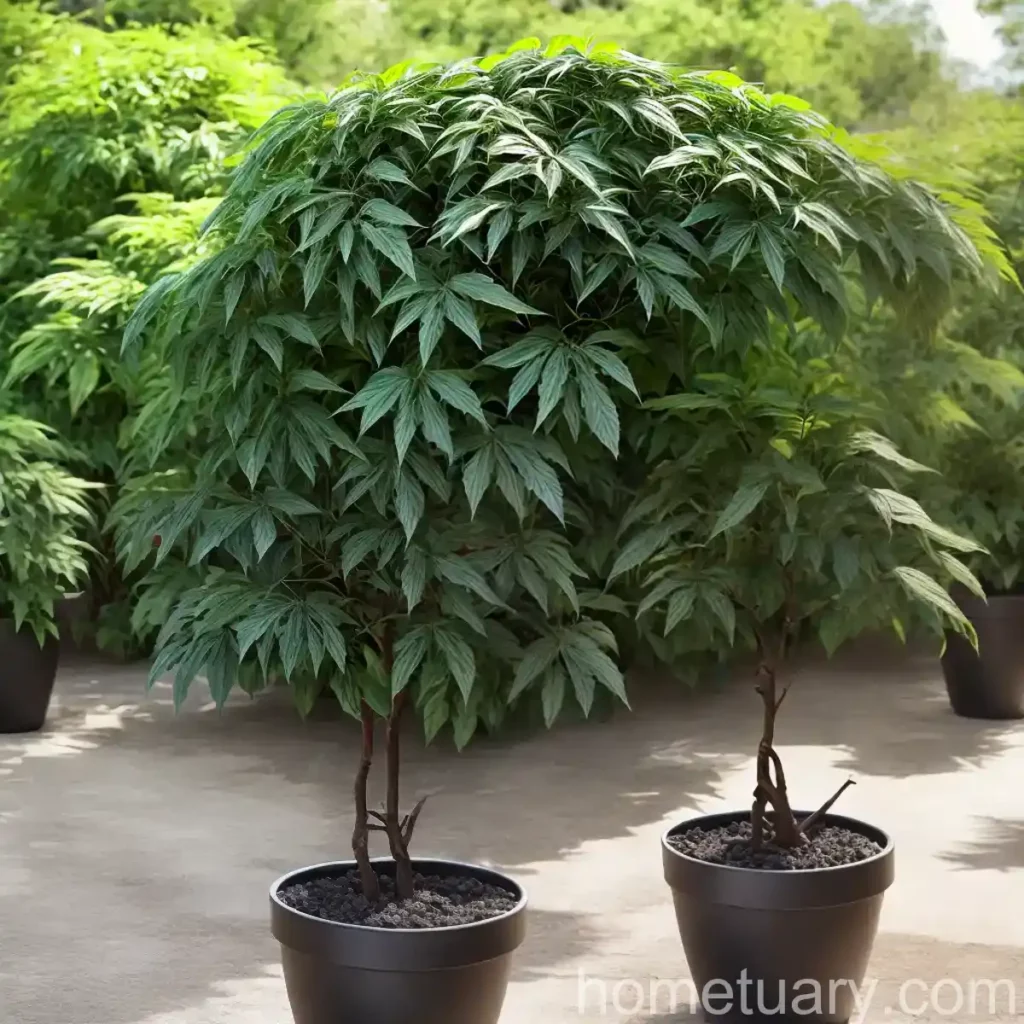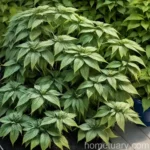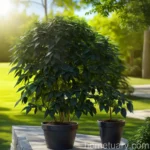Devil’s Walking Stick (Aralia spinosa): A Unique and Intriguing Plant
As a plant scientist with a passion for exploring the diverse and fascinating world of plants, I am excited to delve into the intriguing realm of Aralia spinosa, commonly known as Devil’s walking stick. This singular species is distinguished not only by its striking appearance and unique attributes but also by its diverse cultural, ecological, and medicinal significance. In this comprehensive guide, we will explore the various facets of Devil’s walking stick, ranging from its cultural uses and habitat to its growth requirements, propagation, and interaction with wildlife.
What is Aralia spinosa?
Aralia spinosa, more commonly known as Devil’s walking stick, is a member of the Araliaceae family and is indigenous to North America, particularly in the eastern and central regions of the United States and Canada. It is a deciduous, perennial shrub or small tree that is notable for its commanding stature, rugged appearance, and formidable thorns. The Latin specific epithet “spinosa” alludes to its characteristic spines, further underscoring the plant’s distinctive features.
Botanical Description
- Habit: Devil’s walking stick typically presents itself as a thicket-forming, multi-stemmed shrub, often growing up to heights of 6 to 15 feet (1.8 to 4.6 meters), although exceptional specimens can reach up to 30 feet (9 meters).
- Foliage: The leaves of Aralia spinosa are large and compound, typically composed of 5 to 7 leaflets, with each individual leaflet measuring approximately 8 to 20 inches (20 to 50 cm) in length. The foliage is a vibrant green during the growing season and transforms into splendid hues of yellow and gold in the autumn.
- Flowers and Fruits: In mid to late summer, Devil’s walking stick produces small, white flowers that are arranged in large, showy clusters. These blooms give way to dark purple to black berries, which serve as a crucial food source for various wildlife species, including birds. The berries, while a valuable food source for wildlife, are toxic to humans if ingested.
- Thorns: One of the most defining features of Devil’s walking stick is its formidable array of thorns, which adorn the stems and branches, giving the plant a rather foreboding and impenetrable appearance.
Key Takeaways on Aralia spinosa
Before we delve into the intricacies of cultivating and caring for Devil’s walking stick, it is important to glean key insights into its characteristics and attributes. These include its cultural significance, uses, and the specific conditions it requires to thrive. Let’s embark on a journey to uncover the diverse facets of this captivating plant.
Culture
Cultural Significance
- Folklore and Myths: Devil’s walking stick has long been steeped in folklore and myths, with various cultural narratives attributing mystical and protective qualities to the plant. In some traditions, it is believed that the thorny thickets of Aralia spinosa serve as a barrier against malevolent spirits, hence its association with protection and warding off evil influences.
Unique Uses and Medicinal Properties
- Historical Medicinal Uses: Throughout history, indigenous communities and traditional healers have utilized different parts of Devil’s walking stick for its purported medicinal properties. The roots, bark, and berries of the plant were employed in herbal remedies to address a range of ailments, including arthritis, rheumatism, and fevers. It is important to note that while this historical use exists, it is essential to exercise caution with the plant’s toxic properties.
- Ornamental Value: Beyond its cultural and medicinal significance, Devil’s walking stick also holds aesthetic appeal, especially for those seeking to cultivate unique and visually striking landscapes. Due to its commanding presence and engaging seasonal transformations, Aralia spinosa is often incorporated into ornamental gardens and naturalistic landscapes to add drama and visual interest.
Uses
Before we explore the specific parameters for caring for Devil’s walking stick, it is crucial to delineate its various uses, from landscaping to ecological contributions.
Landscape Maintenance and Garden Design
- Architectural Plant: The imposing stature and striking form of Devil’s walking stick make it well-suited for architectural planting schemes and as a focal point within a garden or landscape design.
- Fall Foliage and Winter Interest: During the autumn season, the foliage of Aralia spinosa undergoes a dazzling transformation, turning brilliant shades of yellow and gold, thereby enhancing the visual allure of the landscape. Even during the winter months, the plant retains an evocative and sculptural presence, making it an asset for winter garden interest.
Growth Requirements
Now, let us shift our focus to the specific conditions that are conducive to the successful growth and development of Devil’s walking stick. Understanding its habitat preferences, water requirements, sunlight needs, and soil considerations is instrumental in cultivating this captivating plant.
Water
- Water Needs: Devil’s walking stick thrives in moist to wet soil conditions, making it well-suited for areas with ample rainfall or adequate irrigation. While it displays a preference for moist environments, it can also exhibit tolerances for brief periods of drought. However, consistent moisture levels are generally conducive to optimal growth and vitality.
Sunlight
- Sun Requirements: When it comes to sunlight, Devil’s walking stick evinces a degree of versatility, accommodating both full sun and partial shade. While it can thrive in full sun conditions, it also demonstrates an ability to adapt to shadier environments, thereby affording flexibility in landscaping and cultivation.
Soil
- Soil Preferences: Aralia spinosa tends to favor rich, well-draining soils, with a predilection for loamy or sandy substrates. The plant is amenable to a diverse array of soil pH levels, encompassing acidic, neutral, and slightly alkaline compositions. However, soil moisture retention remains crucial, thereby necessitating attention to moisture levels and drainage.
Fertilizer
Incorporating appropriate fertilization practices is pivotal to supporting the robust growth and health of Devil’s walking stick. Here, we’ll explore the recommended fertilization strategies for promoting the vigor and vitality of this compelling plant.
- Fertilization Regimen: While Devil’s walking stick exhibits a degree of adaptability and resilience, it can benefit from periodic fertilization to augment its growth and overall well-being. Applying a balanced, slow-release fertilizer in the early spring can furnish the plant with essential nutrients, thereby fortifying its capacity to flourish throughout the growing season.
Pruning
Pruning constitutes an essential aspect of caring for Devil’s walking stick, contributing to the plant’s aesthetic appeal, structural integrity, and long-term health. Here, we’ll elucidate the pruning principles and techniques that are integral to maintaining the vitality and allure of Aralia spinosa.
Pruning Tips
- Timing: Optimal timing for pruning Devil’s walking stick typically occurs during the dormancy period in late winter to early spring, before the onset of new growth. This timeframe provides an opportune window to undertake corrective and rejuvenating pruning measures.
- Pruning Objectives: When pruning Aralia spinosa, the objectives encompass the removal of dead, damaged, or diseased wood, as well as the shaping and thinning of the plant to enhance its structural form and symmetry.
- Cautionary Note: Given the presence of sharp thorns on Devil’s walking stick, exercising caution and employing suitable protective gear is advisable when engaging in pruning activities.
Propagation
Propagation techniques offer avenues for expanding the presence of Devil’s walking stick, whether for horticultural purposes or conservation efforts. Consideration of propagation methods is essential for perpetuating the unique attributes and ecological significance of Aralia spinosa.
Propagation Methods
- Seed Propagation: Devil’s walking stick can be propagated from seeds, with the process typically commencing in the autumn through early spring. Stratifying the seeds can enhance germination rates, and once germinated, the seedlings can be nurtured until they attain sufficient size for transplantation.
- Root Cuttings: Root cuttings present an alternative method for propagating Aralia spinosa, with the propagation process typically initiated during the plant’s dormancy period. By taking sections of the root system and fostering their development under suitable conditions, new plants can be generated, thereby facilitating the expansion of Devil’s walking stick.
Container Popularity
Devil’s walking stick exhibits a degree of adaptability to container cultivation, thereby providing opportunities to integrate this captivating plant into container gardens, patio settings, or urban landscapes.
- Container Gardening: The robust and visually arresting presence of Devil’s walking stick renders it well-suited for container cultivation, where it can serve as an impactful and engaging focal element within a diverse range of outdoor and indoor settings.
Common Diseases
Vigilance in identifying and addressing potential diseases is essential to safeguard the health and well-being of Devil’s walking stick. Here, we’ll explore the common diseases that can affect Aralia spinosa and the corresponding diagnostic measures.
Disease Diagnosis
- Powdery Mildew: Devil’s walking stick can be susceptible to powdery mildew, a fungal disease that manifests as a powdery white coating on the foliage. Providing good air circulation, avoiding overhead watering, and employing horticultural oils or fungicidal sprays can aid in managing and preventing powdery mildew infections.
- Anthracnose: Anthracnose, characterized by dark, sunken lesions on the foliage, stems, and berries, can pose a threat to the health of Devil’s walking stick. Pruning and removing infected plant parts, promoting proper air circulation, and adhering to sound watering practices are fundamental to mitigating anthracnose outbreaks.
Common Pests
In addition to diseases, Devil’s walking stick can also be susceptible to certain pests, necessitating attentive monitoring and proactive pest management strategies.
- Aphids: Aphids, small sap-sucking insects, can infest the foliage of Aralia spinosa, potentially causing damage and compromising the plant’s vigor. Deploying natural predators, such as ladybugs, and employing insecticidal soaps can help control aphid populations and prevent extensive infestations.
Botanist’s Tips
Drawing from the insights gathered on Devil’s walking stick, it is evident that several key considerations and best practices can contribute to the successful cultivation and stewardship of this captivating plant. Here, we’ll encapsulate a series of botanist’s tips tailored to promoting the health, vitality, and aesthetic appeal of Aralia spinosa.
Botanist’s Recommendations
- Attend to Soil Moisture: Given Devil’s walking stick’s preference for moist to wet soil conditions, prioritizing soil moisture management is paramount to sustaining the plant’s vigor and health.
- Adopt Prudent Pruning Practices: When engaging in pruning activities, exercise attentiveness and utilize appropriate protective gear to circumvent injury from the plant’s sharp thorns.
- Monitor Wildlife Interactions: Consider the potential interactions that Devil’s walking stick may foster with diverse wildlife species, particularly in relation to the consumption of its berries and the provision of habitat for birds.
Fun Facts
Unearthing captivating and little-known facts about Devil’s walking stick enriches our appreciation for this unique plant, engendering a deeper connection with its ecological, cultural, and horticultural significance.
Fascinating Insights
- Wildlife Attraction: The berries of Devil’s walking stick serve as a vital food source for numerous bird species, contributing to the plant’s ecological role in supporting avian populations.
- Botanical Resilience: Despite its thorny and rugged exterior, Devil’s walking stick embodies a degree of resilience, adapting to diverse environmental conditions and persisting in the face of challenges.
Given the rich tapestry of attributes and nuances associated with Aralia spinosa, the plant emerges as a compelling subject of inquiry, encompassing a diverse array of facets ranging from cultural significance to ecological interactions.
Links to External Resources
For a more comprehensive understanding of Devil’s walking stick and its diverse dimensions, I recommend the following external resources:
By exploring these resources, you can delve deeper into the captivating realm of Devil’s walking stick and expand your knowledge of its cultural, horticultural, and ecological dimensions.
In conclusion, Devil’s walking stick (Aralia spinosa) embodies an intriguing amalgamation of features, encompassing its formidable thorns, esteemed cultural heritage, and diverse ecological contributions. By immersing ourselves in the multi-faceted narrative of this captivating plant, we foster an enriched appreciation for its unmistakable allure and enduring significance within the realm of botanical exploration and conservation.















